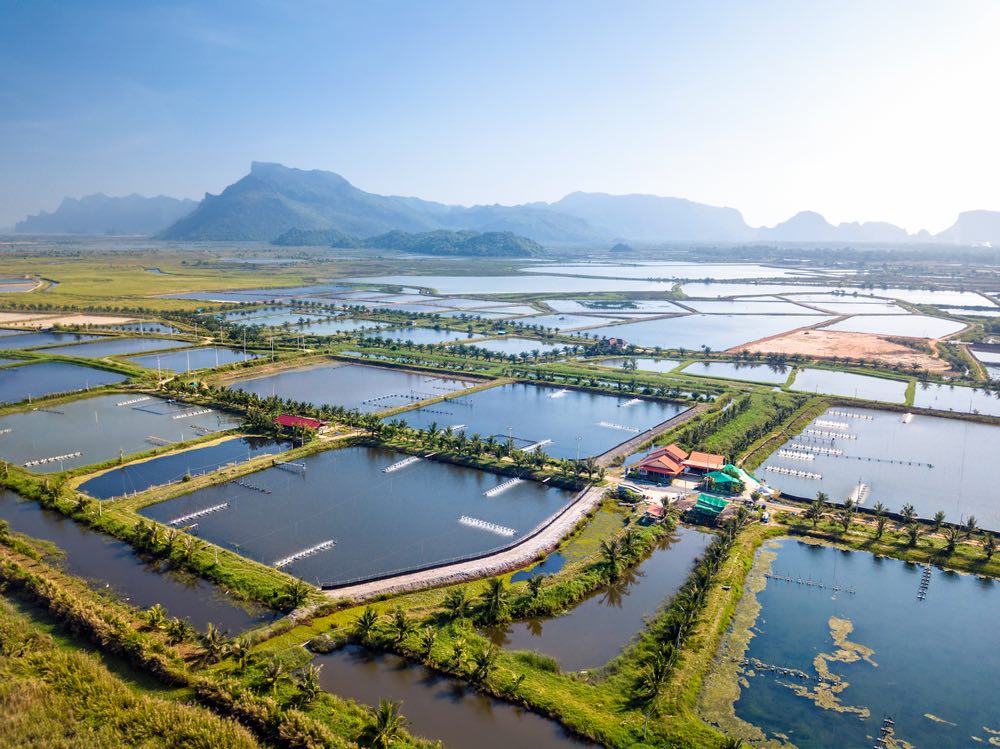Eat Wild American Shrimp To Avoid Unknown Substances In Some Imported Shrimp
June 24, 2022

First, the good news. When American consumers use wild-caught American shrimp – whether they’re in a piping hot bowl of gumbo or placed over a bed of tasty pasta – they can be assured that those shrimp were caught responsibly and are free from harmful substances. They are caught by American shrimpers in the warm, nutrient-rich waters of the Gulf and South Atlantic and are processed, packaged and delivered via a highly monitored U.S. supply chain.
Imported shrimp, on the other hand, neither have the same oversight nor are they grown in the wild. Therefore, purchasing imported shrimp in a grocery store or ordering them off of a restaurant menu often means compromising expectations for quality and flavor and comes with the risk of ingesting harmful substances.
Wild shrimp school freely in vast bodies of water with fluctuating currents and an abundance of rich nutrients. Farm-raised, imported shrimp grow up in confined bodies of water, into which manufactured feed is deposited and is subsequently excreted as waste in the same environment. Most farm-raised, imported shrimp require the use of illegal veterinary drugs to help offset the unsanitary conditions from growing in unnaturally close and contained proximities. Many of those substances have proven harmful to consumers’ health and are even banned in the U.S.
In January 2019 alone, the U.S. Food & Drug Administration rejected 32 shrimp entry lines from India, and 26 of those contained banned antibiotics.1 Despite the rejection rate of imported shrimp and other seafood, testing by the FDA is minimal. In the fiscal year 2015, the FDA examined only 2.2% of all imported seafood and tested only 0.1% of one million seafood import entry lines for illegal drugs. Of that 0.1%, 12% of shrimp tested positive for illegal drugs.2
Along with antibiotics, some imported shrimp contain higher than allowable levels of growth hormones and steroids as well. These substances not only artificially increase size and growth rate, but they can also potentially be absorbed into the human body.
Finally, human consumption of imported shrimp containing these drugs can contribute to antimicrobial resistance (AMR). AMR occurs when common harmful microorganisms in humans – such as bacteria, fungi, viruses or parasites – no longer respond to medicine. AMR is one of the growing problems posed by drug use in aquaculture ponds. AMR kills 29,500 Americans per year and is projected to kill one million Americans by 2050.3
For these reasons (and more, as outlined in a previous blog post linked here), we at Wild American Shrimp recommend that consumers read labels online or in the grocery to determine their shrimp’s country of origin or ask restaurants where their shrimp are from. Wild-caught American shrimp not only taste better due to the nutrients in our very own Gulf and South Atlantic waters, but they are also a healthier alternative, free from antibiotics and other banned substances. An added bonus is that buying sustainable, Wild American Shrimp supports the livelihoods of American workers and their families through the entire supply chain and helps support the U.S. economy.
_____________________________
[1] See India Shrimp Rejections for Antibiotics Spike in January 2019, https://www.seafoodnews.com/Story/1132147/India-Shrimp-Rejections-for-Antibiotics-Spike-in-January-2019
[2] See U.S. Government Accountability Office, Imported Seafood Safety: FDA and USDA Could Strengthen Efforts to Prevent Unsafe Drug Residues, GAO-17-443 (September 2017).
[3] See US Centers for Disease Control, Antibiotic Resistance Threats in the United States, 2013 & Organization for Economic Co-operation and Development, Stemming the Superbug Tide, OECD Health Policy Series (November 2018).
Suggested Articles
ASPA Fights Back Against Indian Shrimp Imports Made with Forced Labor
Port Arthur, TX (April 16, 2024) The American Shrimp Processors Association (ASPA) is taking aggressive action to combat imports of shrimp from India that were...
Read More April 2024American Shrimp Processors Association Launches Trade Petitions Addressing Unfair Dumping and Illegal Subsidies
Read additional information about the trade petitions, including public copies of ASPA filings. Today, the American Shrimp Processors Association (ASPA) filed trade petitions seeking antidumping...
Read More October 2023Bipartisan Legislation Introduced to Ensure the Availability of Healthy and Safe American Shrimp
WASHINGTON, DC – U.S. Representatives Garret Graves (Louisiana) and Kathy Castor (Florida) introduced legislation to stop unsafe, illegally-produced shrimp from reaching consumers. Much of the shrimp...
Read More August 2023

